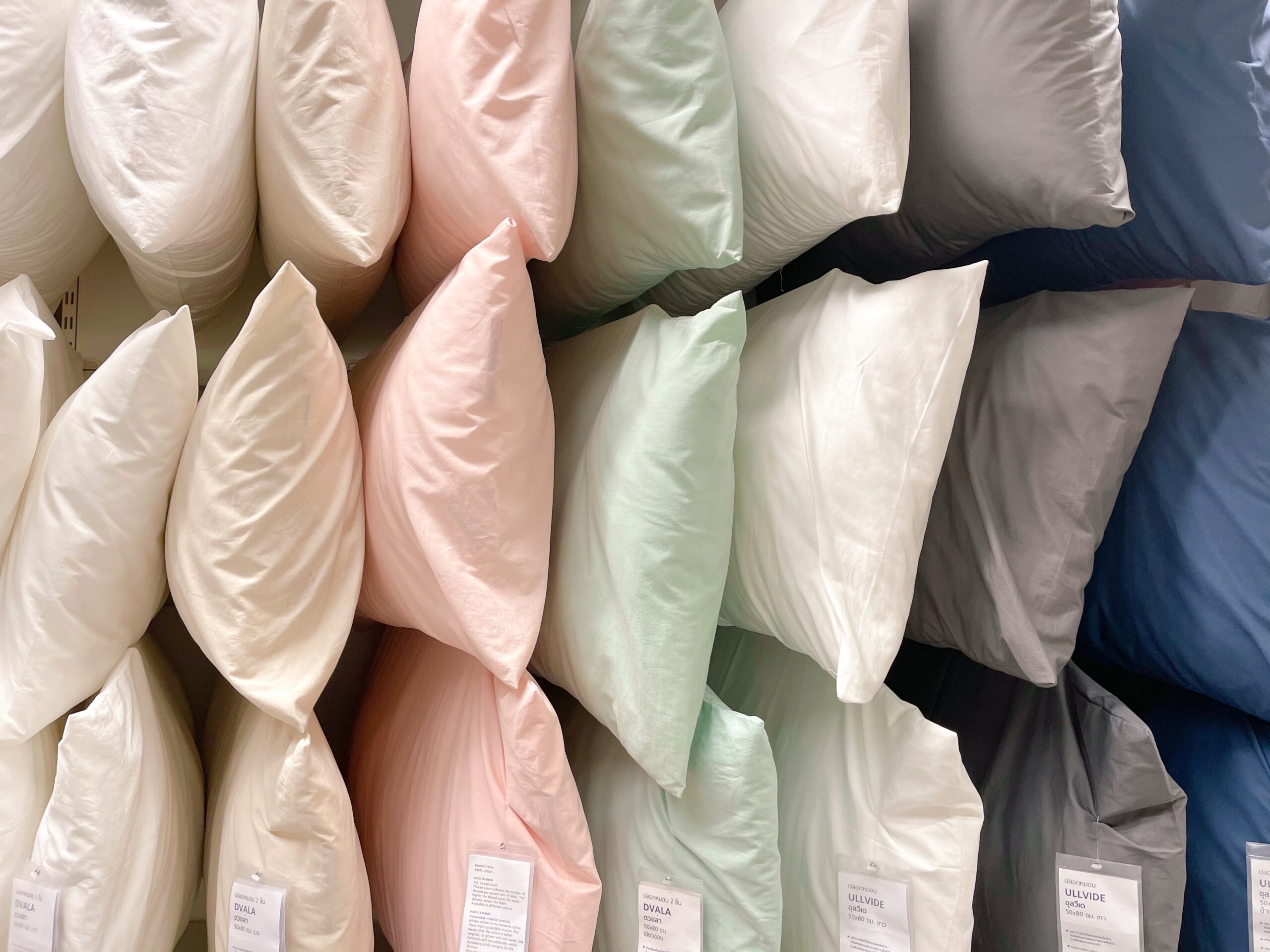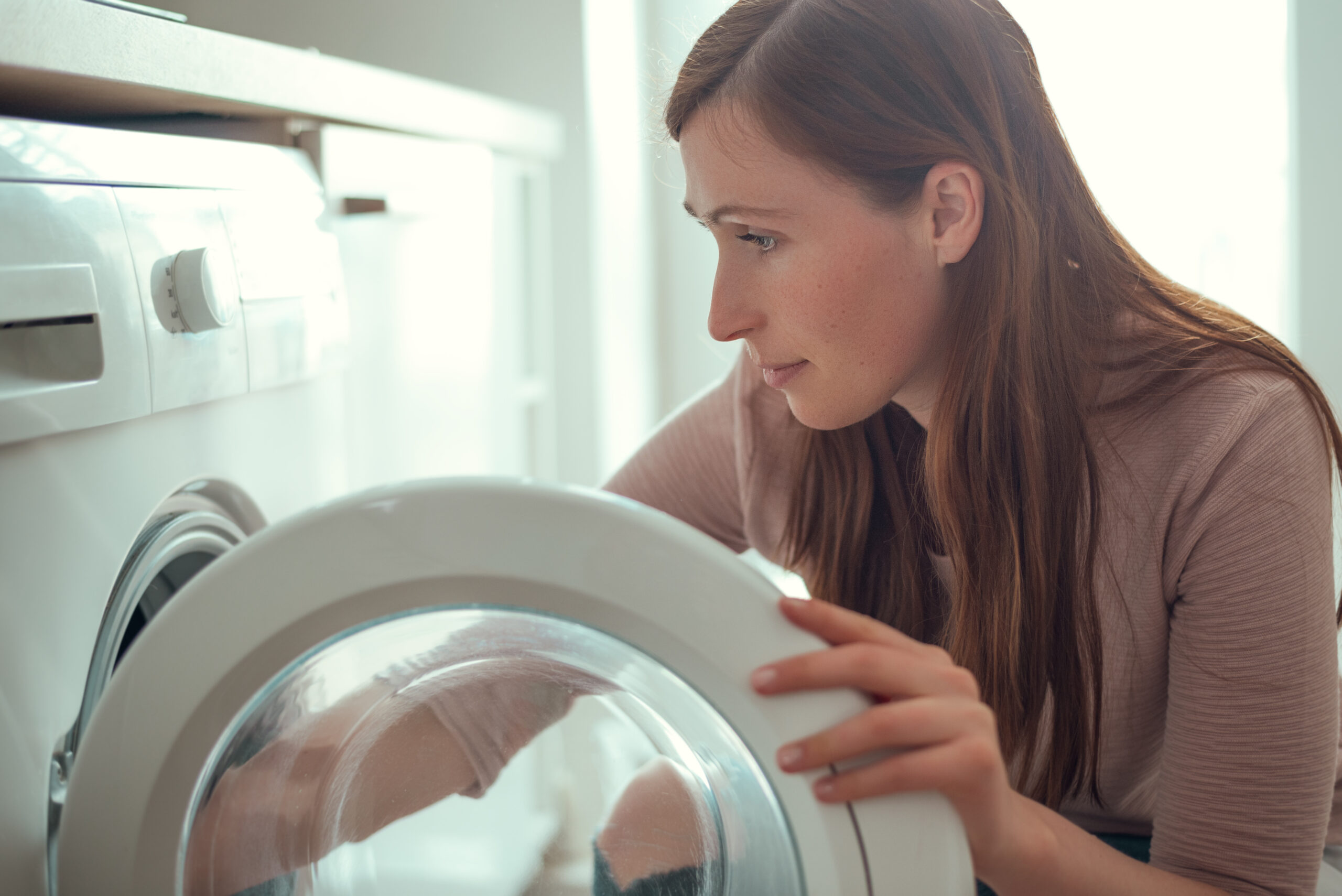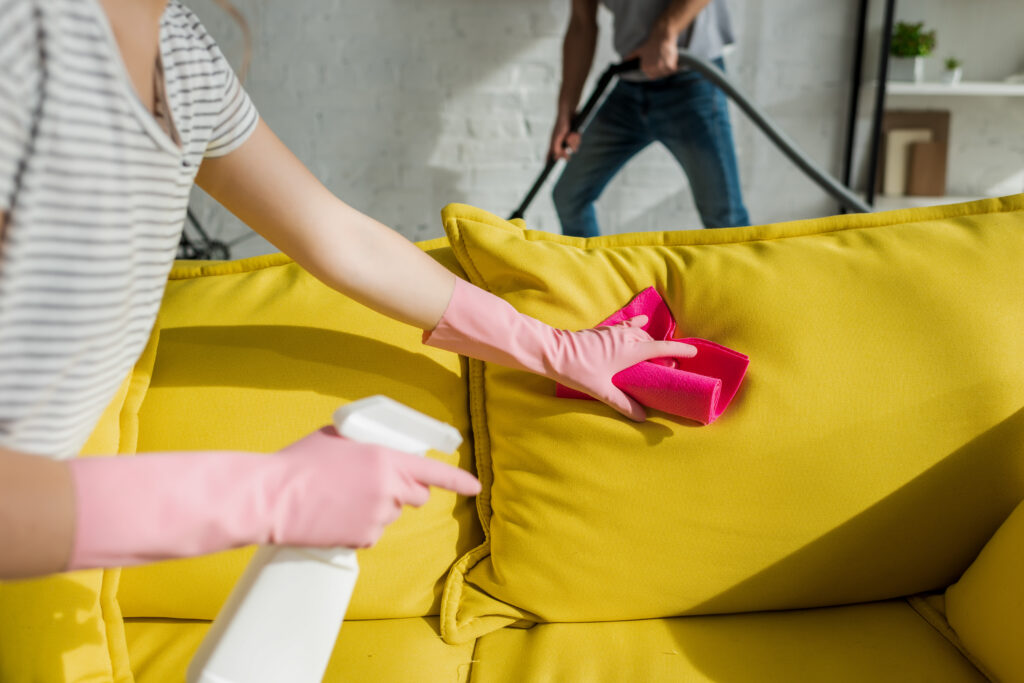How to Wash a Pillow: Guide to Clean and Comfy Sleep

Have you ever considered the cleanliness of your pillows? We often focus on changing bed linens, but pillows play a crucial role in our sleep quality. Over time, pillows accumulate dust mites, bacteria, and allergens, affecting both hygiene and comfort. Regular cleaning not only ensures a healthier sleeping environment but also maintains the pillow’s fluffiness, giving you a cozy night’s rest.
Maintaining a clean pillows is crucial for the overall cleanliness and longevity of your bedding essentials. While washing pillows might seem like a daunting task, it becomes even more challenging when considering the need to wash sheets, pillows, and towels separately. However, fret not! In our comprehensive guide on how to wash pillows, we address this common concern and provide valuable insights.
Now, we’ll walk you through the step-by-step process of how to wash a pillow, both by hand and using a washing machine. Whether you have memory foam, down, or synthetic pillows, we’ve got you covered. Let’s dive in and learn how to keep your pillows fresh and inviting.
As you delve into cleaning pillows, explore our guide Can You Wash Sheets and Towels Together? for an effective approach to your laundry tasks. It will not only save time but also contribute to a hassle-free laundry routine.
Prepare Pillow for Washing - Preliminary Steps
Before washing your pillow with hands or washing machine, let us consider some preliminary steps.

1. Check the Care Label for Specific Instructions
Before you start, check the care label on your pillow. Different materials require different cleaning methods, and the care label provides essential guidelines. It’s your go-to manual for ensuring your pillow stays in its best condition.
2. Remove Pillowcases & Pillow Protectors
First things first, strip off the pillowcases and protectors. These outer layers shield your pillows from dirt and oils, but they need cleaning too! Make sure to toss them in the laundry along with your regular bedding.
3. Inspect for Damages and Repairs if Necessary
Take a moment to inspect your pillows for damages. If you find any rips, tears, or lumps, it’s time for a little repair. Small repairs now can extend the life of your pillow, ensuring your investment lasts longer.
Now that we’ve prepped our pillows, let’s move on to the actual cleaning process. Whether you choose to wash by hand or use a washing machine, we’ll guide you through each method step by step. Stay tuned for a cleaner, cozier night’s sleep
How to Wash a Pillow by Hand: A Step-by-Step Guide
Pillows are our nightly companions, providing comfort and support for a good night’s sleep. However, they also accumulate dirt, oils, and stains over time, affecting both hygiene and longevity. Learning how to wash a pillow by hand is essential to keep them fresh, clean, and comfortable. In this guide, we will walk you through the process of washing a pillow by hand, ensuring you maintain its quality for a long time.

1. Gather Necessary Materials
Before you start, make sure you have all the materials needed for handwashing a pillow:
- Mild detergent
- Basin or tub
- Warm water
2. Pre-Treat Stains and Spots
Begin by examining your pillow for any visible stains or spots. Pre-treat these areas with a stain remover or a mixture of water and baking soda. Gently rub the solution onto the stain and let it sit for a few minutes before proceeding to the next step.
3. Fill the Basin with Water and Detergent
Fill the basin with warm water and add a small amount of mild detergent. Be mindful not to use too much detergent, as excessive soap can be hard to rinse out completely. Swirl the water gently to ensure the detergent dissolves.
4. Handwashing Techniques for Different Pillow Types
Different pillow materials require specific handling:
- Feather Pillows: Gently squeeze the pillow to allow the soapy water to penetrate. Avoid wringing or twisting, as it can damage the feathers.
- Down Pillows: Use a soft pressing motion, ensuring the down clusters are thoroughly cleaned.
5. Rinsing Thoroughly to Remove Soap Residue
After cleaning, drain the soapy water and refill the basin with clean, warm water. Rinse the pillow thoroughly by squeezing and pressing it under the water until all soap residue is gone. This step is crucial to maintain the pillow’s fluffiness and prevent skin irritation.
6. Dry the Pillow
There are several effective drying methods for handwashed pillows:
- Air Drying: Place the pillow on a flat surface in a well-ventilated room. Rotate it occasionally to ensure even drying. This method may take a day or two, but it’s gentle on the pillow’s fibers.
- Using a Towel: Lay the pillow on a clean, dry towel. Roll the pillow and towel together, pressing gently to absorb excess moisture. Repeat with a second dry towel if necessary. Afterward, lay the pillow flat to air dry.
- Avoiding Direct Sunlight: While sunlight can help eliminate odors, direct sunlight can fade or damage the pillow’s fabric. Opt for a shaded area if you prefer drying your pillow outdoors.
By following these simple steps, you can handwash your pillow effectively, ensuring it remains fresh, clean, and comfortable for many nights to come. Remember, a well-maintained pillow not only enhances your sleep quality but also contributes to a healthier sleeping environment. So, roll up your sleeves and give your pillows the care they deserve!
Wash a Pillow Using a Washing Machine

Step 1. Compatibility Check: Can Your Pillow Handle the Spin?
When it comes to washing your pillow in a machine, not all pillows are created equal. Check the care label on your pillow to ensure it’s machine-washable. Most synthetic and down-alternative pillows can handle a spin cycle, while memory foam or specialty pillows may not. When in doubt, it’s safer to opt for hand washing.
Step 2. Setting the Stage: Dialing in the Right Settings
Now that you’ve confirmed your pillow is washing machine-friendly, set the stage for a successful cleaning mission. Choose the gentle cycle to treat your pillow with the care it deserves. Opt for warm water, as it strikes the perfect balance between effectively cleaning your pillow and preserving its structural integrity.
Step 3. Soap and Stains: A Delicate Balance
Pillows, just like our favorite t-shirts, can fall victim to stains. Before tossing them into the washing machine, spot treat any stains with a mild detergent. This simple step can make a significant difference in the outcome of your pillow’s cleanliness. Be gentle but thorough – no one likes remnants of last night’s snack on their pillow!
Step 4. Finding Balance: The Art of Load Balancing
Washing machines, thrive on balance. To ensure an even wash, balance the load by adding a couple of towels or small items. This not only ensures that your pillow gets the attention it deserves but also prevents your washing machine from going off-kilter during the spin cycle.
Step 5. Spinning Right: Selecting the Perfect Spin Cycle and Rinse Options
For pillows, opt for a medium spin cycle. Too fast, and your pillow might lose its shape; too slow, and it might not dry properly. Balance is key here. Additionally, choose the extra rinse option if available. This ensures all detergent residues are thoroughly washed out, leaving your pillow fresh and odor-free.
Step 6. Timely Rescue: Saving Your Pillows from Post-Wash Odors
Once your washing machine rings its completion, don’t leave your pillows languishing inside. Promptly remove them. Lingering in the machine can lead to that dreaded post-wash musty odor. Instead, give them a breath of fresh air – literally. Hang them on a line in the sunlight or place them on a clean, dry towel indoors. Proper ventilation is the secret to banishing any lingering odors
Some Post Washing Care Tips
Keeping your pillow in good condition is as necessary as cleaning it. Read some tips below to keep your pillow clean, and comfortable for long time.

Fluffing and Reshaping Your Pillow:
After giving your pillow a thorough wash, it’s essential to fluff and reshape it to restore its original form. Gently plump the pillow, massaging it to evenly distribute the filling and regain its natural shape. This step not only enhances the pillow’s comfort but also ensures proper support for a good night’s sleep.
Checking for Damages and Clumps:
Post-wash, it’s crucial to inspect your pillow for any damages or clumps. Run your hands through the pillow, feeling for irregularities. If you notice any lumps or clumps, carefully break them apart, ensuring the filling is evenly distributed. Addressing these issues now can prevent discomfort later.
Allowing Proper Drying Time:
One of the most vital aspects of post-wash care is ensuring your pillow is completely dry. Dampness can lead to mold and mildew growth, which not only affects the pillow’s hygiene but also its longevity. Allow your pillow to air dry thoroughly, preferably in the sunlight. Alternatively, use a dryer on a low heat setting, adding clean, dry towels to absorb moisture and speed up the process.
Reapplying Pillow Protectors or Clean Pillowcases:
To maintain the cleanliness of your freshly washed pillow, it’s essential to cover it with a pillow protector or a clean pillowcase. These protective layers act as a barrier against dirt, oils, and other contaminants. Plus, they’re much easier to clean than the pillow itself, prolonging its lifespan and ensuring a healthier sleep environment.
Storing in a Well-Ventilated Area:
Once your pillow is fluffed, dry, and properly covered, store it in a well-ventilated area. Avoid enclosed spaces like plastic bags, as they can trap moisture and odors. Instead, place your pillows in a closet with good airflow or on a bed with adequate space between each pillow. Proper ventilation helps maintain the freshness of your pillows, ensuring they’re ready for a cozy night’s sleep whenever you need them.
Embarking on a toilet cleaning mission after laundry? Don’t miss out on Canes Cleaners Expert Guide: How to Clean a Toilet?
How to Wash a Pillow: Read Some FAQs
A1: It's recommended to wash your pillows every 3-6 months to maintain their cleanliness and extend their lifespan. However, pillows that are used daily or suffer spills or stains should be washed more frequently. When it comes to washing your pillows liners, The Laundress recommend to wash them biweekly.
A2: No, not all pillows can be machine washed. Check the care label on your pillow for specific instructions. Memory foam pillows, for instance, should never be machine washed but can be spot cleaned.
A3: To prevent clumps, fluff your pillow before and after washing. Also, ensure it's completely dry before using it again. If clumps persist, gently break them apart with your hands.
A4: Decorative pillows often have delicate fabrics or embellishments that may not withstand regular washing. Check the care label. If it's machine washable, use a gentle cycle and place them in a pillowcase to protect them during washing.
A5: Yes, you can use a mild detergent to wash your pillows. Avoid using too much detergent, as it can be difficult to rinse out completely and may leave residues on your pillows.
A6: For stubborn stains, pre-treat the area with a mild stain remover or a mixture of baking soda and water. Let it sit for a while before washing. Avoid using bleach, as it can damage pillow fibers.
A7: Yes, you can put most pillows in the dryer on a low heat setting. Add clean, dry towels to help absorb moisture and speed up the drying process. However, be cautious with pillows that have delicate fabrics or trims; these are usually best air-dried.
A8: Ensure your pillow is thoroughly dry by feeling it; it should be completely cool to the touch. Press down on various parts of the pillow; if it feels damp or cool, it's not dry yet. Proper drying is essential to prevent mold and mildew growth.
A9: Yes, you can wash feather or down pillows in a washing machine. Use a gentle cycle and a mild detergent. Adding a couple of tennis balls to the dryer can help fluff up the feathers during the drying process.
A10: The drying time for pillows varies based on their size, material, and the surrounding humidity. On average, it may take 24-48 hours for a pillow to air dry completely. Placing them in direct sunlight can speed up the process.
In conclusion, washing your pillows, whether by hand or using a washing machine, is a simple yet essential task that significantly impacts your sleep quality and overall health. Regularly cleaning your pillows not only removes allergens and dust mites but also refreshes their support, ensuring you wake up feeling rejuvenated every day. Remember, fluffing, inspecting, drying, and protecting your pillows are crucial steps in post-wash care. By following these practices, you not only maintain the hygiene and longevity of your pillows but also create a healthier sleep environment for yourself and your loved ones.
So, whether you’ve just learned how to wash a pillow for the first time or you’re a seasoned pro, remember the importance of these post-wash steps. Your pillows will thank you with nights of uninterrupted, restful sleep. Sweet dreams!
